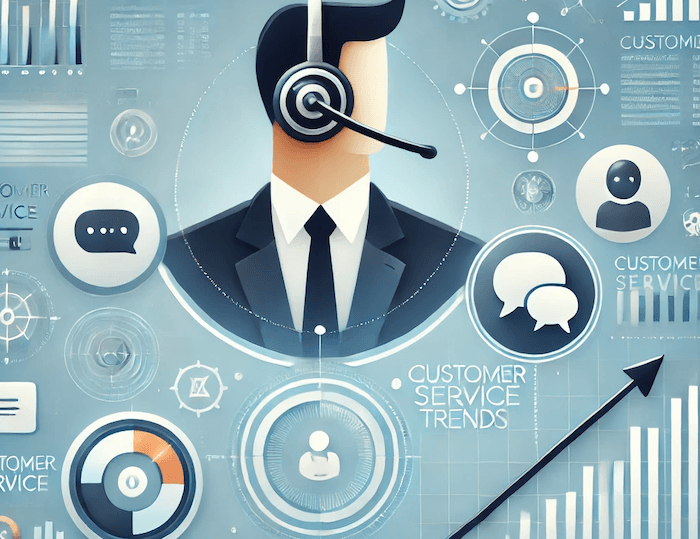8 Key Trends Shaping the Future of Customer Service
Explore eight transformative trends shaping the future of customer service, from AI-driven insights and omnichannel strategies to sustainability and ethical practices. Learn how businesses can adapt to meet evolving customer expectations and create lasting value.
Customer service is evolving rapidly, driven by technological advancements and changing consumer expectations. To stay competitive, businesses must embrace these key trends that shape the future of customer service. By leveraging tools like AI-powered speech analytics and customer call insights, companies can enhance customer interactions and improve satisfaction.

1. The Rise of AI in Customer Service
Artificial Intelligence (AI) has become a cornerstone of efficient and personalized customer support. Businesses are increasingly turning to call scoring tools, sentiment analysis, and speech-to-text software to improve their customer service performance.
Applications
- Chatbots for instant responses to FAQs.
- Sentiment analysis tools to detect customer emotions in real-time.
- Predictive analytics to anticipate issues before they escalate.
Benefits
- Reduces response times and improves accuracy.
- Frees up customer service agents to handle complex, high-value interactions.
Example: Virtual assistants like Google Assistant and Alexa illustrate how AI enhances customer experience and boosts customer satisfaction tracking.
2. Omnichannel Communication is Non-Negotiable
Customers now expect seamless communication across multiple channels. Integrating phone, email, chat, social media, and messaging apps into a unified system is essential for creating a comprehensive customer service experience.
What It Means
- Ensuring consistent service regardless of the platform.
- Allowing agents to access customer interaction history from any channel.
Key Tools
- CRMs like Salesforce and HubSpot consolidate interactions across channels, enhancing contact center AI capabilities.
Result: Customers no longer need to repeat their issues, leading to faster resolutions and higher satisfaction.
3. Hyper-Personalization is Here to Stay
Generic responses no longer meet customer expectations. Hyper-personalization uses data-driven customer service to tailor interactions to individual needs.
How to Achieve It
- Use data from past interactions to predict future needs.
- Implement tools for analyzing customer preferences and behavior.
Example: Netflix’s personalized recommendations highlight the impact of data-driven personalization on customer experience.
4. Remote and Hybrid Work for Customer Service Agents
The shift to remote and hybrid work environments for customer service agents is transforming how businesses operate.
Implications
- Increased flexibility for agents improves morale and productivity.
- The need for secure remote work tools and customer data access.
Tools
- Solutions like Microsoft Teams, Zoom, and cloud-based call center platforms.
Challenge: Maintaining team cohesion and consistent service quality across distributed teams.
5. Real-Time Data and Insights Drive Decisions
Real-time data analytics tools enable businesses to make informed decisions during customer interactions. These insights are crucial for proactive issue resolution and performance improvement.
Examples
- Dashboards displaying live KPIs like average handling time and customer satisfaction scores.
- Alert systems notifying supervisors of potential escalations based on sentiment analysis.
Impact: Real-time call monitoring and feedback systems empower agents to resolve issues faster and improve call center analytics.
6. Self-Service is Becoming Essential
Customers increasingly prefer solving their issues independently through self-service options.
Popular Self-Service Tools
- AI-powered chatbots for instant assistance.
- Knowledge bases with step-by-step guides.
- Interactive Voice Response (IVR) systems for automated responses.
Why It Matters
- Reduces call center load.
- Empowers customers to find quick solutions to their problems.
Future Scope: Voice search optimization for self-service platforms will further enhance customer engagement.
7. Social Media is the New Frontline
Social media platforms are now critical channels for customer service interactions.
Why It’s Important
- Customers expect rapid responses to queries and complaints on platforms like Twitter and Facebook.
- Social media amplifies both positive and negative feedback.
Best Practices
- Respond within an hour.
- Use tools like Sprout Social to manage interactions effectively.
Example: Companies like Delta Airlines are recognized for their prompt social media support.
8. Sustainability and Ethical Practices Are in Demand
Modern consumers value brands that prioritize sustainability and ethical practices in their operations.
Customer Expectations
- Transparent policies on data usage and privacy.
- Commitment to sustainable operations and community impact initiatives.
How to Reflect This
- Share sustainability efforts on your website and in customer communications.
- Train agents to emphasize these values during interactions.
Example: Brands like Patagonia highlight their sustainability initiatives in customer engagement, building stronger connections with eco-conscious customers.
Conclusion
The future of customer service lies in adaptability and innovation. By embracing these key trends—from AI-driven insights to omnichannel communication—businesses can create meaningful customer experiences that drive long-term success. Incorporating tools like call analysis platforms and customer feedback systems ensures that companies remain agile, data-driven, and customer-focused.
References
Gartner, "Top 10 Strategic Technology Trends," 2024.
McKinsey & Company, "The Future of Customer Experience," 2024.
Forrester, "Personalization and Customer Experience," 2023.
PwC, "The Future of Work," 2024.
Harvard Business Review, "Using Data to Drive Customer Service," 2024.
Deloitte, "The Rise of Self-Service in Customer Support," 2023.
Social Media Today, "Best Practices for Social Media Customer Service," 2024.